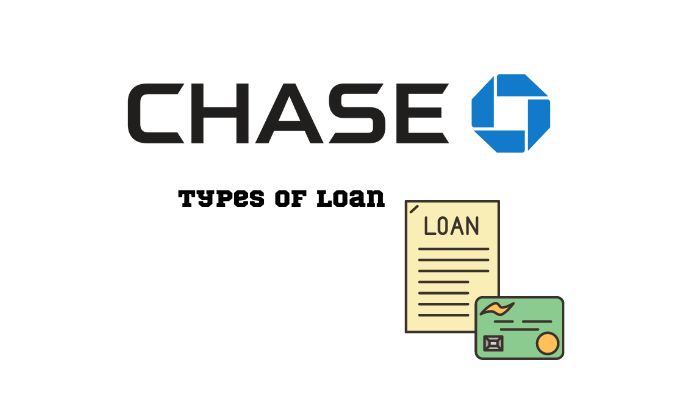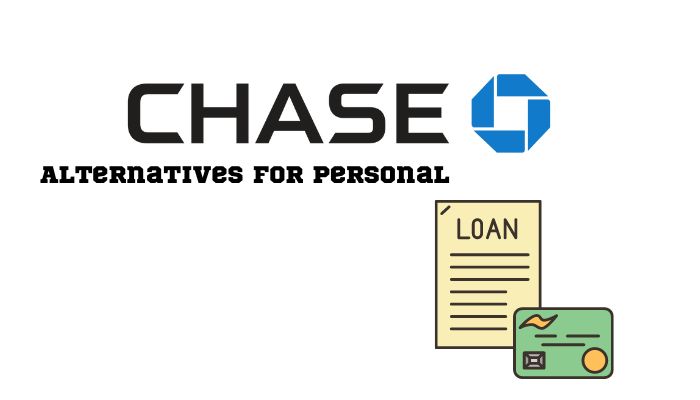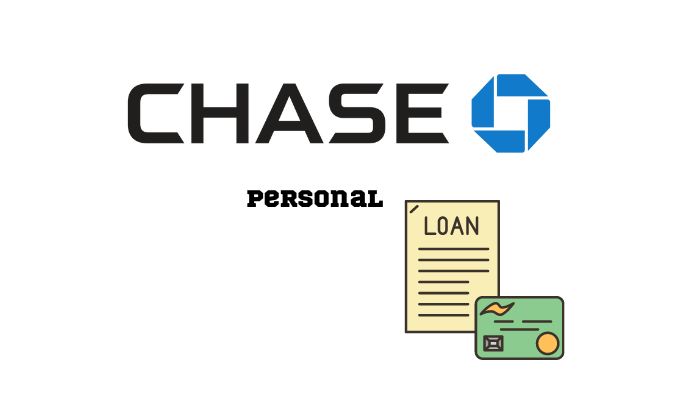This article covers the question “How To Get A Personal Loan From Chase.” Chase does not offer personal loans.
Chase is renowned for providing a wide range of credit cards with benefits, including cash back and travel incentives.
Although it does not currently offer personal loans, it offers various business and property loans.
A personal loan has a monthly payment schedule, a fixed interest rate, and a fixed repayment term.
Numerous personal, familial, or household needs, such as paying off high-interest credit card debt, completing home upgrades, or covering high costs, can be covered through personal loans.
Contents
Types of Loans Chase Provides

As one of the biggest national bank organizations, Chase meets a range of client demands, including loans.
Chase provides:
1. Mortgage Loan:
A mortgage is a legal agreement between you and a lender that gives the lender the right to seize your property if you fail to repay the loan in full plus interest. The highest loan amount for Chase’s jumbo mortgage loan option is $3 million.
No early payout penalties for prepayment: Our list of mortgage lenders does not impose penalties on borrowers who pay off their loans early.
Rate of interest: With a jumbo mortgage from Chase, you can borrow up to 85% of the value of your house. These come in 15-, 20-, and 30-year fixed forms and 5/1, 7/1, and 10/1 ARMs. Your loan should be at least $647,200 to qualify for one of these.
2. Home Equity Credit lines (HELOCs):
A HELOC is a sort of credit line that uses your house as a security again for debt by using it as collateral.
Prepayment penalties vary depending on the lenders. Some lenders may impose penalties if you complete your loan before the first three or five years of a repayment plan. For loans from Chase, there is no penalty for early repayment.
Interest rate: There is a portion and an ongoing yearly cost for Chase HELOCs. You must pay a $50 origination charge in addition to a mortgage recording tax in some states. The amount of this charge might range from 0.115% to 2.175% of the credit limit.
3. Car loans:
Chase Auto is available to assist you in finding the ideal vehicle. Chase accepts applications for automotive loans for both new and used vehicles.
Prepayment penalty: There isn’t one for the chase auto loan.
Interest rate: APRs out of its networks of lenders start at 3.99% for new automobiles, 4.24% for used cars, and 2.49% for refinance, although the rate of interest you receive will vary based on factors such as your credit and the length of the loan term you select.
4. Credit cards:
Chase Loan is an interface that allows you to take out a loan against the available credit on your current card.
Prepayment penalty: For loans with Chase, there isn’t one.
Interest rate: Fixed-rate loans have terms of 15 or 30 years, while adjustable-rate loans have terms of 7 or 6 months, i.e., an adjustable-rate mortgage (ARM). The following are the Chase mortgage rates as of June 14, 2022: Rate and APR for a 30-Year Fixed: 6.125%. 15.-Year Fixed: 5.250% Rate; 5.405% APR.
Fees- Charges can range from $50 to over $500; however, some lenders waive the price for the first year.
5. Commercial credit lines:
Chase provides these to larger companies with significant working capital requirements. This type of funding is referred to as a “commercial line of credit.”
Prepayment penalty: Chase does not impose a prepayment penalty.
Interest rate: The interest rate is roughly 3%. The fees associated with these loans are not disclosed by Chase, although the SBA will charge Chase a guarantee fee of 0.50 percent and an annual fee of 0.247 percent.
Fees and charges: You are required to pay an annual charge. Your annual charge is $150 if your line of credit is $50,000 or less. You must pay a $250 yearly fee if it is more than $50,000.
6. Business equipment financing:
Provides adequate is a type of credit instrument that enables you to fund all of your company’s equipment and machinery needs.
Prepayment penalty: Chase doesn’t impose one on early loan repayment.
Interest rates: The majority of equipment loans typically have fixed interest rates between 8% and 30%, delivering a predetermined term duration that guarantees constant monthly payments.
Flexibility – This is for every type of loan Chase offers; from ten to thirty years, Chase’s flexible loan payback periods are available.
Additionally, fixed-rate and adjustable-rate options are available to you. The freedom to pick a current, qualified transaction and determine a repayment schedule and monthly amount paid that suits them.
Read– Chase Bank For Business
How come Chase doesn’t provide personal loans?
Personal loans aren’t lucrative enough for Chase to give them, which is the most likely explanation. In addition, Chase provides a variety of credit cards, car loans, and house loans to satisfy the borrowing requirements of customers and businesses.
What alternatives exist to personal loans except for Chase?

Personal loans are not presently available from Chase Bank. If you’re seeking a loan, though, you might be able to get money through banks and other internet lenders.
1. Multiple loan possibilities from U.S. Bank
Like Chase, U.S. Bank is a nationwide bank that provides a range of loans. Its financial products include personal loans; You might have problems being approved for one of the company’s loans if your credit rating is lower than 660.
If you set up autopay using a U.S. Bank account, you’ll receive a 0.5% bank rate savings.
You’ll be relieved to learn that U.S. Bank has no prepayment penalties. You can avoid paying interest by paying back your debt several months or even years in advance.
2. Member benefits at SoFi
If you take one of SoFi’s loans, you can take advantage of certain exclusive member benefits. These include access to career mentoring, a 0.125% interest rate discount on additional loans, and gatherings with other members at happy hours and dinners.
SoFi personal loans have periods ranging from 2 to 7 years.
According to SoFi, “no shady fees” exist. You won’t be responsible for origination costs, late payments, or prepayment penalties with a SoFi loan.
3. Online Lenders:
Most online lenders will estimate your rates without performing a rigorous investigation on your credit because they work with all different kinds of credit profiles.
Loan sizes range from $1,000 to $100,000.
Credit scores from poor to exceptional are allowed.
APR varies from 6% to 36%.
4. Marcus by Goldman Sachs:
If your credit is strong, you may be able to qualify to receive one of the lowest Marcus personal loan interest rates. If you set up autopay, you’ll additionally receive a rate discount of 0.25 percent.
Marcus advertises a lack of sign-up, origination, prepayment, and late fees for its loans.
You are allowed to postpone one payment until the conclusion of the loan without incurring additional interest once you have made 12 or more timely, complete monthly payments in a row.
5. Unions of credit
Most credit unions do offer personal loans, typically at rates, and are less expensive than those offered by traditional banks and online lenders. They are eligible regardless of whether they have established credit records.
From $250 to $50,000 in loan amounts.
Credit scores from poor to exceptional are allowed.
The average APR at federal credit unions for a three-year loan is 8.86%.
6. Wells Fargo: Sizeable loan sums
Unsecured personal loans from Wells Fargo are available in quantities up to $100,000.
You can be eligible for a “relationship discount” of up to.25% if you currently bank with Wells Fargo.
A personal loan from Wells Fargo has no origination fees. Additionally, you are not penalized for paying off your loan early.
You have a range of options for payback lengths, from 12 to 84 months.
Read– Can Chase Bank Notarize Documents?
What paperwork must I provide to apply for a personal loan?
You might need to give your lender a few documents for the original request and the verification process. You will need the following paperwork to apply for a personal loan:
1. A loan request
Each lender will require an application to start the loan procedure, and this application—which asks you for personal information—can look a bit different from to lender.
2. Verification of income and employment
The following documents can typically be used to prove your income if you hold a traditional job:
- Bank statements
- W-2s and 1099s
- Tax returns
- Paystubs
- Employer contact information
3. Address validation
Lenders may evaluate your level of lifestyle stability using proof of your living situation. Even though some lenders could want particular paperwork, you can typically utilize one of the following.
- Utility bill
- Mortgage statement
- Bank and credit card statement
- Property tax receipt
- Voter registration card
Identification documents include a birth certificate, citizenship certificate, driver’s license, passport, and social security card.
You may also require details on your credit score and monthly expenses.
Read– Chase Debit Card Coverage Limit
How can I apply online for a personal loan?
Follow the following eight steps you apply for a personal loan if you’ve determined it’s the best form of credit.
1. Compute the figures:
Start by calculating the amount of money you’ll require, keeping in mind that certain lenders impose an initial fee, which they subtract from the proceeds of the loan.
2. Select the loan type:
After weighing your choices and your credit situation, pick the loan type that best suits your scenario.
3. Check your credit score:
Most lenders will do a credit report on you to determine how likely you are to repay your loan. Even while some online lenders have started taking alternative credit information into account, they usually still take your credit score into account.
4. Think about your alternatives:
Depending on your creditworthiness, you could require a co-signer to get authorized for a personal loan with a respectable interest rate.
5. Compare personal loan rates from different lenders:
You can also obtain prequalified with a soft credit check from several internet lenders, which won’t lower your credit scores to prospective lenders if they offer a prequalification process.
6. Decide on a lender and apply:
Pick the bank with the greatest offer after doing your research, and then begin the application procedure.
You might be able to complete the entire application procedure online and then submit the required papers for application, depending on the kind of lender.
Read– Is Chase A Good Bank For Students?
What distinguishes a personal loan from a per-day loan?
When it comes to covering unexpected needs, there are a few significant distinctions between payday lenders and personal loans:
The category of personal loans is substantially larger. Typically, banks, credit unions, and online personal loan providers will offer this loan. Personal loans have substantially lower interest rates and costs than payday loans.
Effect on the credit score: Few payday lenders send credit agency reports. Only personal loans, then, appear on your credit record.
If you take out such a bank loan and repay it on time, your credit rating will rise, making it simpler for you to secure better loans and interest rates in the future.
Cost: Payday loans typically include hidden fees and levies in addition to substantially higher interest rates than personal loans.
Accessibility: Applying for a payday loan can be simpler, especially for those with poor credit histories and other financial difficulties.
If you own a prepaid card account, some payday lenders may even let you apply for a loan without having a bank account.
- Understanding HIPAA Compliance: Obligations for Covered Entities and Business Associates - April 23, 2024
- Things to Invest in for the Easter Season in 2024 - March 29, 2024
- Why Experience Matters: Finding An Established Dental Implants Provider - March 29, 2024
